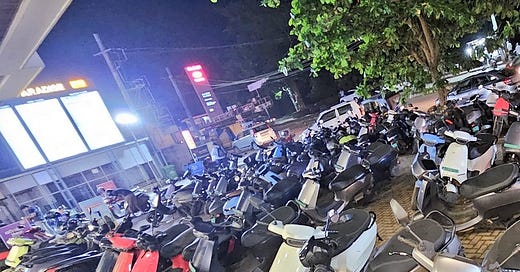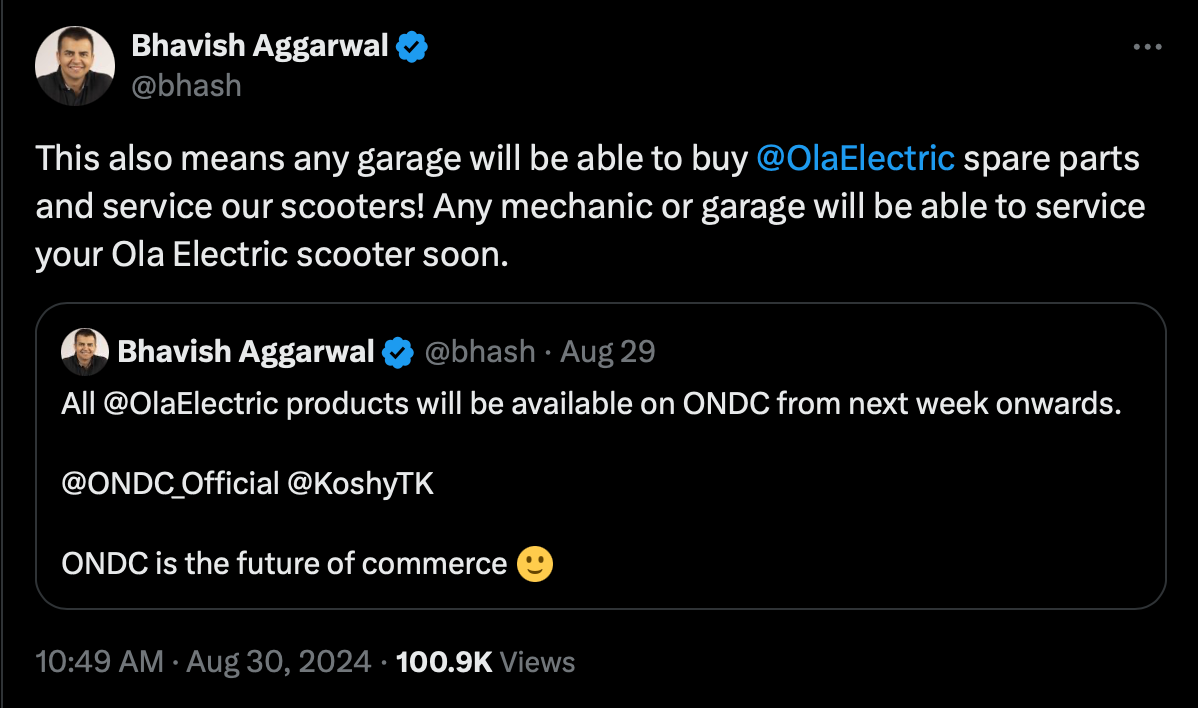EV service center is ripe for disruption
EV Service is plagued and hampering the customer experience
A prominent disappointment for existing EV customers is the poor service center experience.
The service center staff aren’t trained well to handle electric vehicles. They overcharge the customers (MG incident, Tata incident) for regular service, often times bringing it closer to ICE levels. There’s no incentive for the service center staff to treat the EV differently from ICE.
EV customers are the most gullible due to probable “High battery pack cost” (if replacement is needed). They will try and do everything that they are told to do by the service center to keep the battery warranty intact.
There have been repeated instances of community customers being asked to replace the battery pack by claiming the insurance for MG cars, instead of the warranty. Low revenue per electric vehicle is one lever that pushes the service centers to engage in such unethical practices.
The service centers have ran their business for ages and haven’t seen a disruption to their business model. EVs have very few moving parts as compared to an ICE car.
Tesla’s service schedule says that you need to bring in the car when your car has an issue or if there’s a recall. Tesla is highly vertically integrated. Indian OEMs are not, but that’s not a good reason to have “no scheduled service” as a standard. It exists because that’s how it has been so far.
This ‘no scheduled service’ takes away the stress on existing dire service center network. It also takes away a chunk of their income.
The top two EV OEMs in 4W passenger - Tata and MG - follow a scheduled service for their vehicles.
The two wheeler industry is plagued with the service center problem too.
Traditional OEMs getting into the EV segment are relying on their existing service network to service these electric vehicles. Unless incentives are clearly aligned at the service centres, they are going to face similar challenges like 4W brands.
Ather has a subscription model and the customer needs to stick to the service schedule, else Ather can easily mark the vehicle as “out of warranty” leaving the customer in a lurch.
Ola, on the other hand, has no fixed service schedule. It even experimented with servicing the scooters via a service center on wheels. Bhavesh Agarwal, founder at Ola, recently announced that customers will be able to buy not only the Ola electric vehicles but also the spare parts. This means that anyone can order spare parts from Ola and service their vehicles. This is particularly significant and needs to be dissected, especially when they are getting 80,000 complaints a month.
Service Centres have been replacing parts instead of repairing them for a faster turnaround time. Oftentimes an entire assembly / subsystem is replaced because of one faulty part in the assembly / subsystem. The rest of the parts are then sent to the factory to see what is salvageable and what is not.
With spare parts being made available on ONDC, any garage can start replacing these for Ola customers. Similarly, mechanics dealing with electrical assembly can start replacing those for Ola customers. Eventually, we can have boutique garages specialising in fixing battery packs too.
The defective mechanical parts - could be fixed locally or sent to the OEM. Defective electrical / electronic parts can be sent to empanelled repair shops that have an expertise in handling electronics, soldering, motor windings, etc.
This allows the mechanical workshops and the repairing companies to get into this business with the right revenue expectations.
It opens up a new arena for companies with proficiency in repairing spare parts. These OEMs can operate on a hub and spoke model where one repair shop can service multiple mechanics.
This will decrease the turn around time of parts availability. It will also lead to faster resolution. The companies signing up to be empanelled vendors have a different set of revenue expectations from the traditional service center led approach.
Software related fixes are already being provided as over the air updates, for most major OEMs, except Tata.
The customers will also get a choice of where they would like their vehicles to be serviced.
The existing ecosystem players viz dealerships can continue selling electric vehicles with no recurring revenue or the OEM invests into going direct to customers.
Repairs also help OEMs with their bottom line. OEMs need to come with SOPs and manage their supply chain, which I believe are solvable problems.
Coming up with lofty ideas and executing it is not an easy task. Ola has a hit and miss record, and only time will tell if Ola can nail this type of a service model.
This article was born out a TeslaClubIndia X Spaces. Checkout the complete discussion here and the relevant part here.
Psst - if you missed my earlier post, referrals are now live on ExpWithEVs.in.
When you use the referral link below, or the “Share” button on any post, you'll get credit for any new subscribers. Simply send the link in a text, email, or share it on social media with friends.
When more friends use your referral link to subscribe (free or paid), you’ll receive special benefits.
Get a 1 month paid subscription for 3 referrals
Get a 3 month paid subscription for 10 referrals
Get a 6 month paid subscription for 25 referrals
Paid subscribers get special access to the upcoming update on the state of EV Charging infrastructure in India :)







Good article.